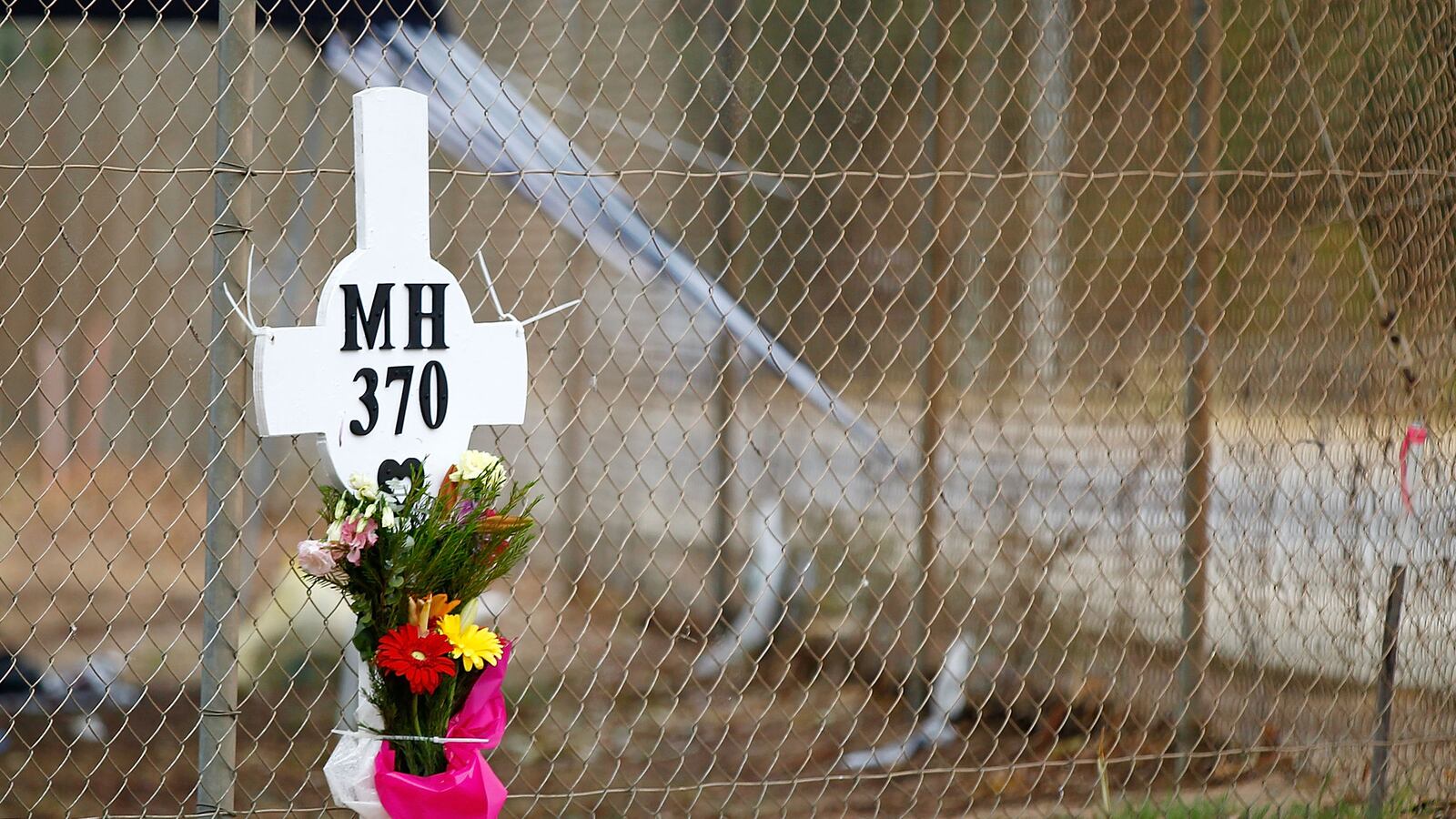One of the few new details revealed in the preliminary report on the disappearance of Flight MH370 released Thursday by the Malaysians is the cargo manifest.

It confirms that a large consignment of lithium-ion batteries was aboard the Boeing 777 and outlined in a red box was the warning: “The package must be handled with care and that a flammability hazard exists if the package is damaged. Special procedures must be followed in the event the package is damaged, to include inspection and repacking if necessary.”
The presence of the batteries was admitted by the Malaysians only two weeks after the flight vanished.
The consignment weighed 440 pounds. Even if half of that weight represented the packaging material, it was still a significant number of batteries. The lithium-ion batteries that caused the grounding last year of the entire Boeing 787 fleet weigh 60 pounds on each plane. As Dr. Victor Ettel, a leading authority on the risks of lithium-ion technology, pointed out to me, the batteries in the cargo of Flight 370 had “several times more Li-battery firepower” than those on the 787.
Given that Flight 730 was able to fly for six or more hours without any communication from the crew, investigators have to consider what event could have incapacitated the pilots and passengers and yet left the 777’s essential systems working perfectly. The batteries in the cargo hold could be the cause if they overheated.
There is a debate among experts about how to classify and define the effects of a lithium-ion battery meltdown. In the case of the 787, Boeing argued that there was neither fire nor smoke. Ettel explains that in what is called a “thermal runaway” the batteries give off toxic fumes including arsenic, which are not necessarily detected by normal smoke alarms and can be lethal if not vented.
The Malaysian report gives no indication of any problem in loading the consignment—or, if there was, what action was taken.
This is typical of the superficiality of the report. There is nothing in it about the state of security on the tarmac as the airplane was being prepared for its flight, no information about the oversight of baggage handling or of the personnel servicing the airplane.
This illustrates a crucial problem in assessing the quality of the Malaysian investigation. On the one hand we might expect too much—the kind of vivid and detailed record of the last minutes in the life of a flight that is available when a wreck is found. In the absence of any scrap of physical evidence that is not going to happen in the case of Flight 370.
But on the other hand there should be a large body of verifiable information from the history of the flight—the maintenance records, including any recent parts replacements, the fueling of 777, the crew’s preparations before the flight left the gate, any problems during the boarding of passengers—that must be given detailed scrutiny by investigators.
There are also some worrying questions about security in the boarding area of the Kuala Lumpur terminal. Paul Miller, a resident of Singapore, wrote to the Financial Times last week describing his experience boarding Flight MH360 recently. Miller has a large metal ball in his left hip “that lights up airport metal detectors the world over…”
The security scanning at Kuala Lumpur failed to register anything. Miller, alarmed, pointed this out. The security officer was amused until he realized Miller was serious, and promised to find the head of security. Twenty minutes later, with the airline pressing him to board, Miller had still seen no response.
The Boeing 777 vanished in the early hours of March 8, and this report is dated April 9. If it does truly represent the sum total of an active investigation, then one thing this does demonstrate is the paucity of information gathered in one month of work. To be sure, the report does urge the adoption of live data streaming to avoid dependency on black boxes, but there’s an almost indecent and sudden conversion by many others to this obvious need.
The most useful graphic is the projection of the 777’s flight path, once it made its sharp left turn, an early zigzag course over the Straits of Malacca and then its sudden turn to the south, just clipping the western tip of Indonesia at Banda Aceh.

The Malaysian military picked up the flight on radar as it headed back toward Malaysia but took nearly eight hours to report this to the civilian authorities. Air traffic controllers in Malaysia, Vietnam, and Cambodia were confused as they attempted to locate the 777 at the request of Malaysian Airlines—and the airline itself took four hours to alert authorities that the flight had gone rogue.
In the main, the report reads like a perfunctory piece of bureaucratic record-keeping, uninformed by any of the expertise normally evident in crash investigations.
As though anticipating this weakness, acting Transport Minister Hishammuddin Hussein announced this week that a new leader had been appointed to the investigation (without saying who had previously been in charge). The new investigator-in-charge is Kok Soo Chon, a former director general of Malaysia’s Department of Civil Aviation, with a background in electrical engineering.
“We will have a panel of experts that is transparent, that’s credible and it involves practically the whole world,” said Hussein. That didn’t seem to be reflected in the way that today’s report was released—by email, without a press conference to answer questions.






